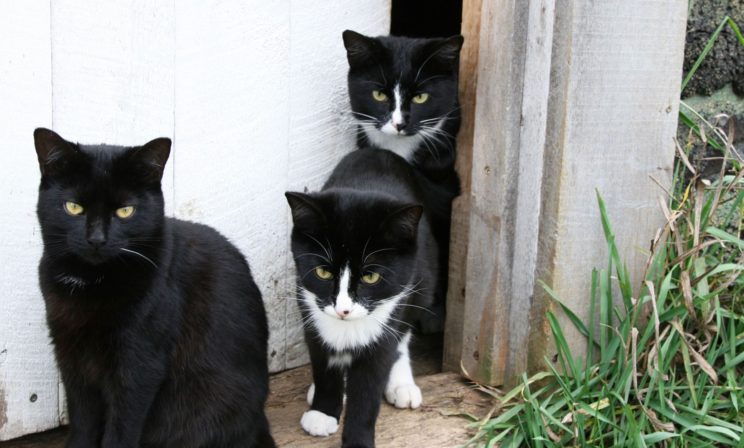
Per my last post, I had hoped to take the remainder of the month off from other duties to work on two books scheduled to be published in 2020. But like Al Pacino/Michael Corleone in The Godfather, “Just when I thought I was out, they pull me back in!” What pulled me back in is an opinion piece the Los Angeles Times published that “U.S. cities are overrun with feral cats.” It was written by a person whose byline says she is the co-writer of a book about sisterhood, prayer, and sex.
How a co-author of a book on sisterhood, prayer, and sex is an expert on cat population dynamics is, of course, left unanswered. As is the source for the claim that, “The alleys, parks and vacant lots of this country are alive with so many stray and feral cats,” that as many as 100,000,000 — almost one cat for every U.S. household — now is said to roam the streets. No citation is offered for this absurdity. Nor how it is possible that many of us don’t encounter legions of cats every time we open the door, go to a restaurant, drive past an alley, walk through a park, or stroll by a vacant lot.
I don’t mean occasionally, sometimes, or even more often than not. I mean every single time given that there is, allegedly, one stray cat for every three people. When I go out, I see hundreds, if not thousands, of people all around me. Most days, I see no cats. Why? Because it is — like the claims about the number of stray dogs that are also often made — completely made up.
From this absurd premise comes other equally absurd claims, which not only also lack any citation for their authenticity, but have been specifically disproven. These include that:
- Community cat sterilization is untested (despite the number of studies which prove otherwise; see also here, here, and here);
- Cats are killing billions of birds (which has been debunked as based on agenda-driven shoddy science);
- They are “spreading diseases like toxoplasmosis” (disproven: “Contact with cats, kittens, cats’ faeces, or cats who hunt for food was not a risk factor for infection“); and,
- They are suffering en masse (again, disproven).
While she thankfully claims to abhor killing cats, she also claims that those who disagree with her are guilty of “magical thinking,” citing an unnamed “cat lover.” No surprise: The only citation in the entire piece is an anonymous “cat lover.” Equally of no surprise, it is also a logical fallacy; specifically, an ad hominem attack.
Aside from being internally inconsistent (claiming sterilization is largely untested and then proposing sterilization as a solution), the central premise and its supporting arguments are, to put it mildly, wrong, not the least of which is because statements are not facts. Relying on an unnamed “cat lover” is not evidence. And string-citing a “parade of horribles” is not a valid alternative to studies which have proved otherwise. Nor does adding the word “opinion” to the title, as the editor did, rectify the problems. Mere opinions should not be accorded any deference unless they are shown to be based on verifiable evidence on which reasonable people can agree. Instead, we are expected to accept her claims as “received wisdom” where evidence, analysis, and rigor have no place.
That is why it is surprising that the Los Angeles Times decided to publish the piece, and then also chose to publish two letters to the Editor celebrating it, that are likewise sloppy, such as the demonstrably false claim that cats “endanger human lives and public safety” (disproven) and that it is “delusional” to try and find all social cats in shelters good homes (in the opposing face of not only the data but experience; namely, communities which have done exactly that).
What makes the op-ed editor’s decision to do so especially tragic is not only that it feeds a false narrative that demonizes cats and thus puts them at risk (despite the lip service the author gives to not wanting cats killed), but that the editor did so in the golden age of journalism in which we currently live. Almost every day, we are offered opinion pieces in newspapers and magazines across the country, including The Atlantic, Washington Post, The New York Times, Quillette, and others, that are majestic in their use of language, unassailable in their logic, biting in their wit, and brilliant in their analysis, their originality, and their rigor. There are simply not enough hours in the day to read them all and get much else done. The quality and quantity of journalistic prose has never been better. And yet, the Los Angeles Times chose instead to publish vapid, anti-fact, anti-cat clickbait.
————-
Have a comment? Join the discussion by clicking here.